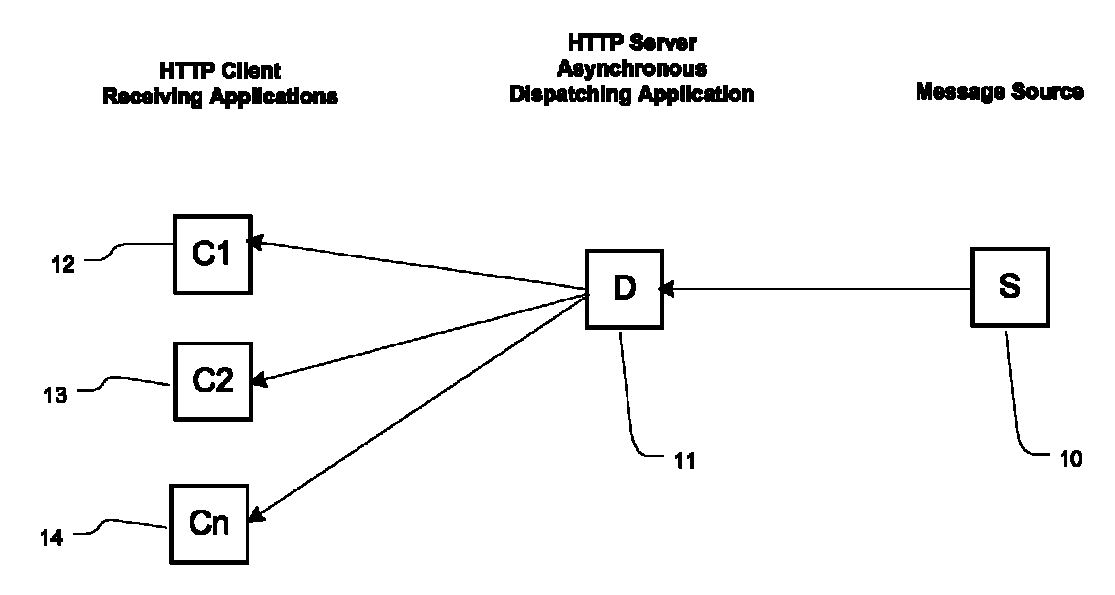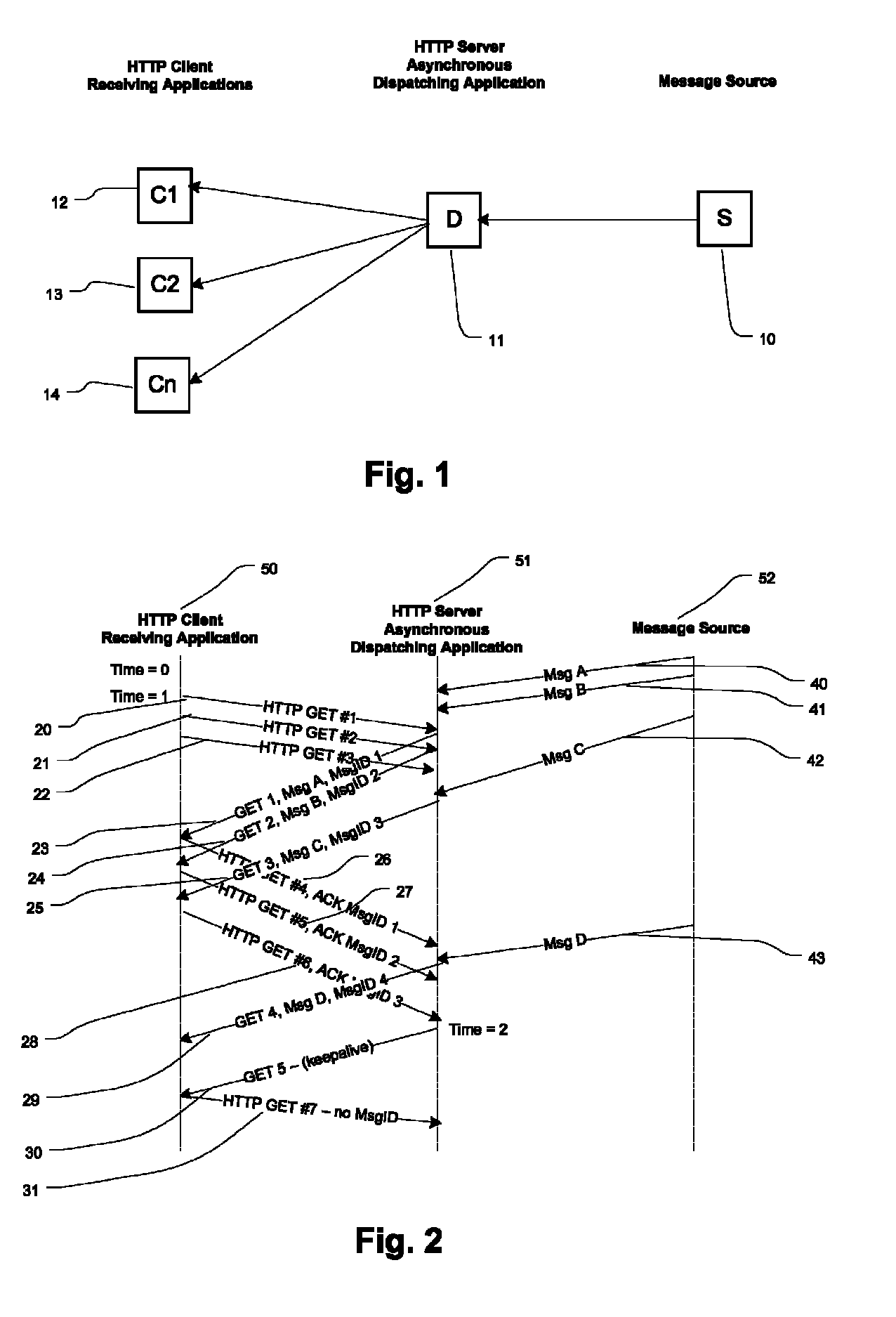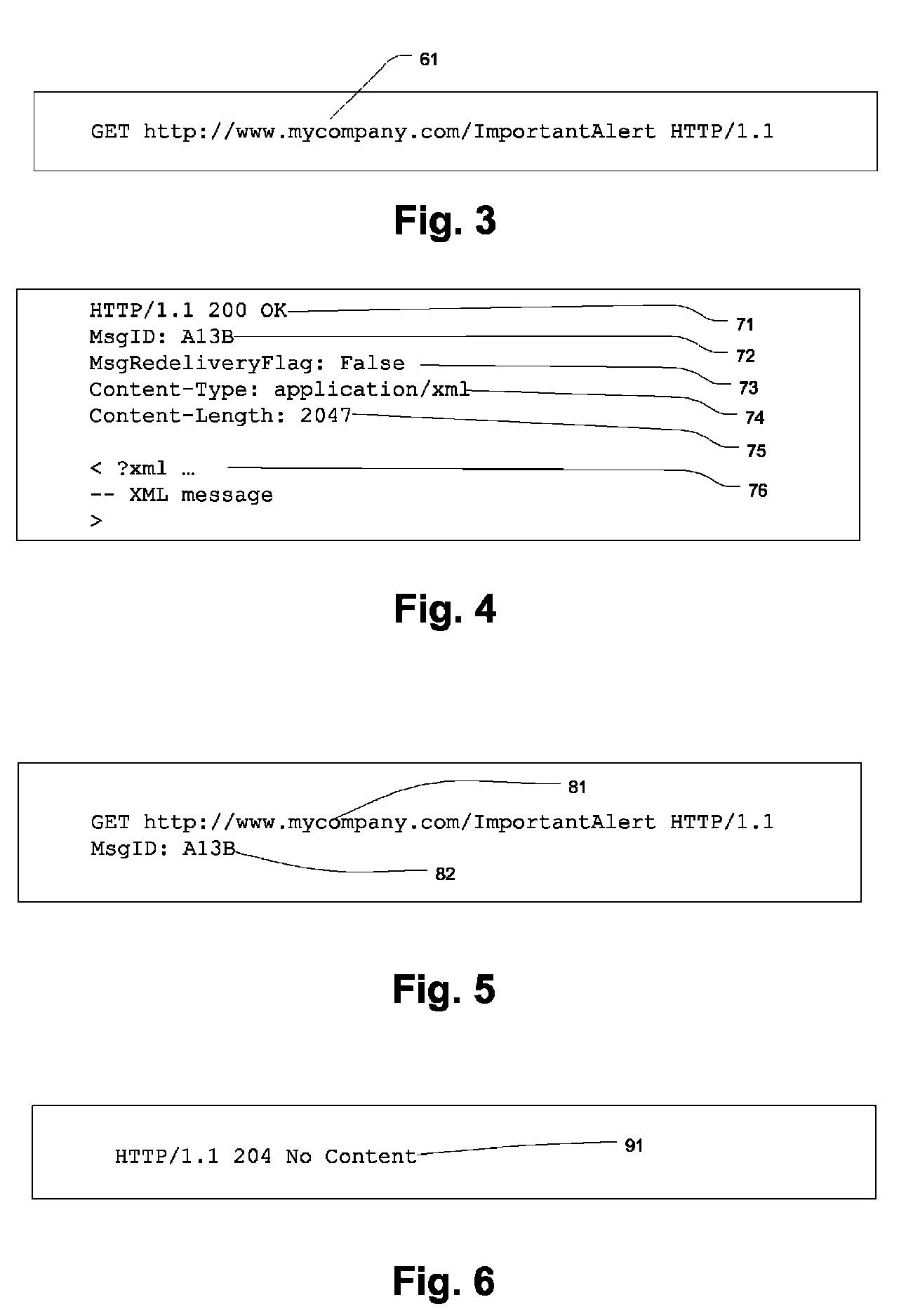Low latency and assured delivery using HTTP
a technology of assured delivery and low latency, applied in the field of data communication networks, can solve the problems of excessive network traffic, no mechanism for providing assured delivery of messages to the receiving application, and less desirable use of an http server, so as to achieve low latency and improve performan
- Summary
- Abstract
- Description
- Claims
- Application Information
AI Technical Summary
Benefits of technology
Problems solved by technology
Method used
Image
Examples
Embodiment Construction
[0013]FIG. 1 depicts the general message delivery scenario applicable to this invention. In FIG. 1, a message source 10 asynchronously sends messages to an HTTP Server 11 to then be delivered to one or more HTTP client applications 12-14 based on some message routing rules. In the simpler form, message source 10 and HTTP Server 11 could in fact be the same application delivering messages based on some criteria to one or more HTTP client applications 12-14. The message source 10 and HTTP server 11 are applications typically implemented in software on general purpose computing platforms although other implementations are also possible. The HTTP clients 12-14 are also typically software applications running on general purpose computing platforms that are separate from the HTTP Server's computing platform and in fact typically not co-located with the HTTP Server application, but rather reachable over an Internet Protocol (IP) network, through a variety of communication links, IP routers...
PUM
 Login to View More
Login to View More Abstract
Description
Claims
Application Information
 Login to View More
Login to View More - R&D
- Intellectual Property
- Life Sciences
- Materials
- Tech Scout
- Unparalleled Data Quality
- Higher Quality Content
- 60% Fewer Hallucinations
Browse by: Latest US Patents, China's latest patents, Technical Efficacy Thesaurus, Application Domain, Technology Topic, Popular Technical Reports.
© 2025 PatSnap. All rights reserved.Legal|Privacy policy|Modern Slavery Act Transparency Statement|Sitemap|About US| Contact US: help@patsnap.com



